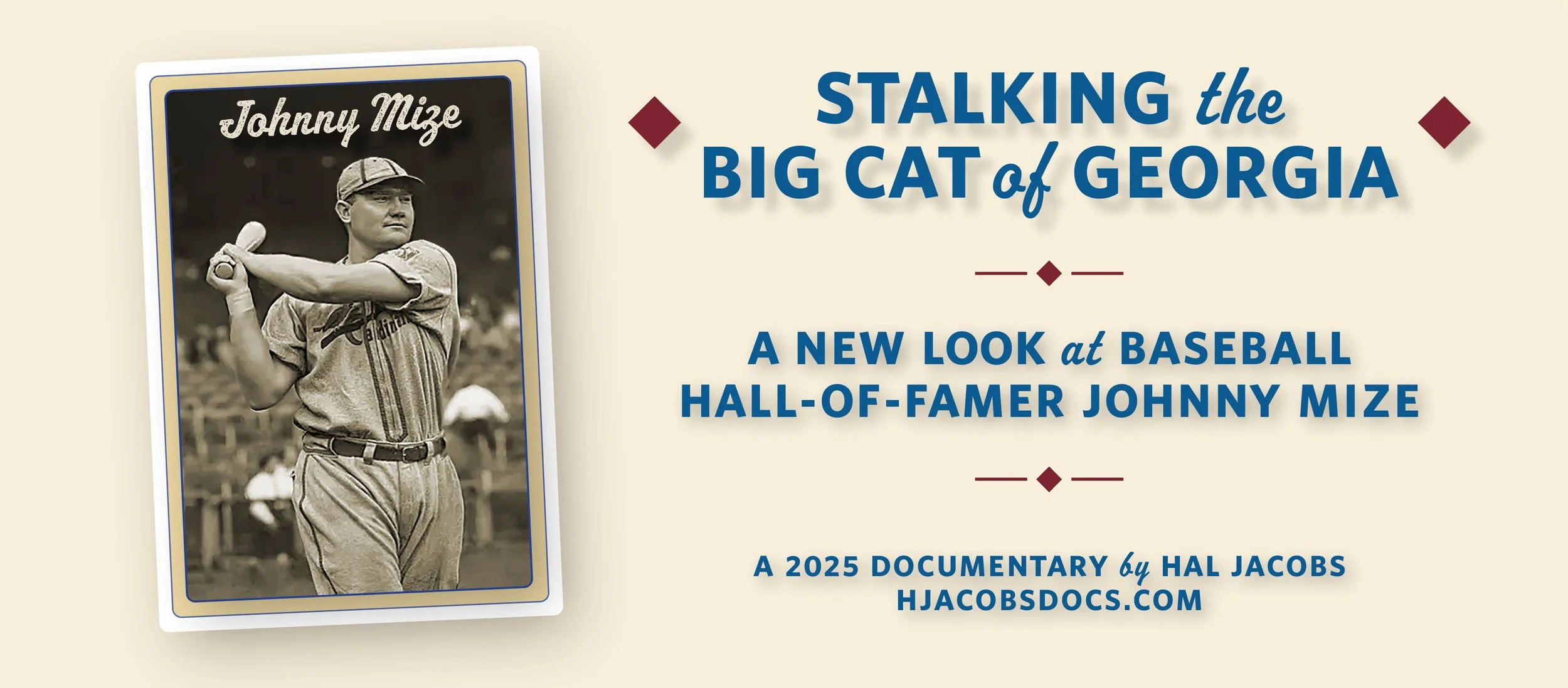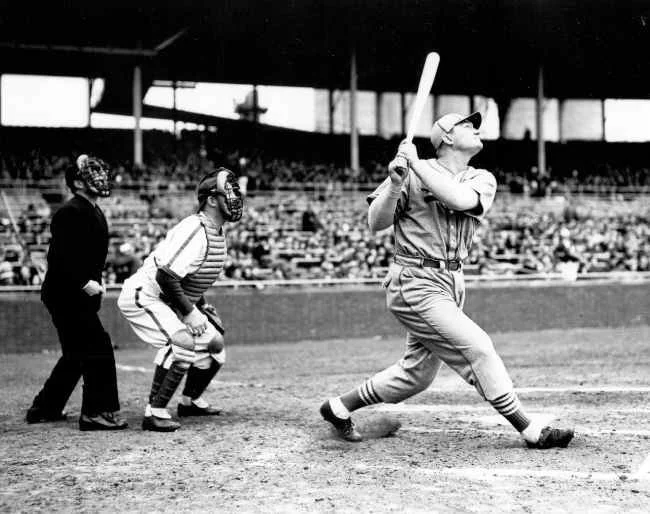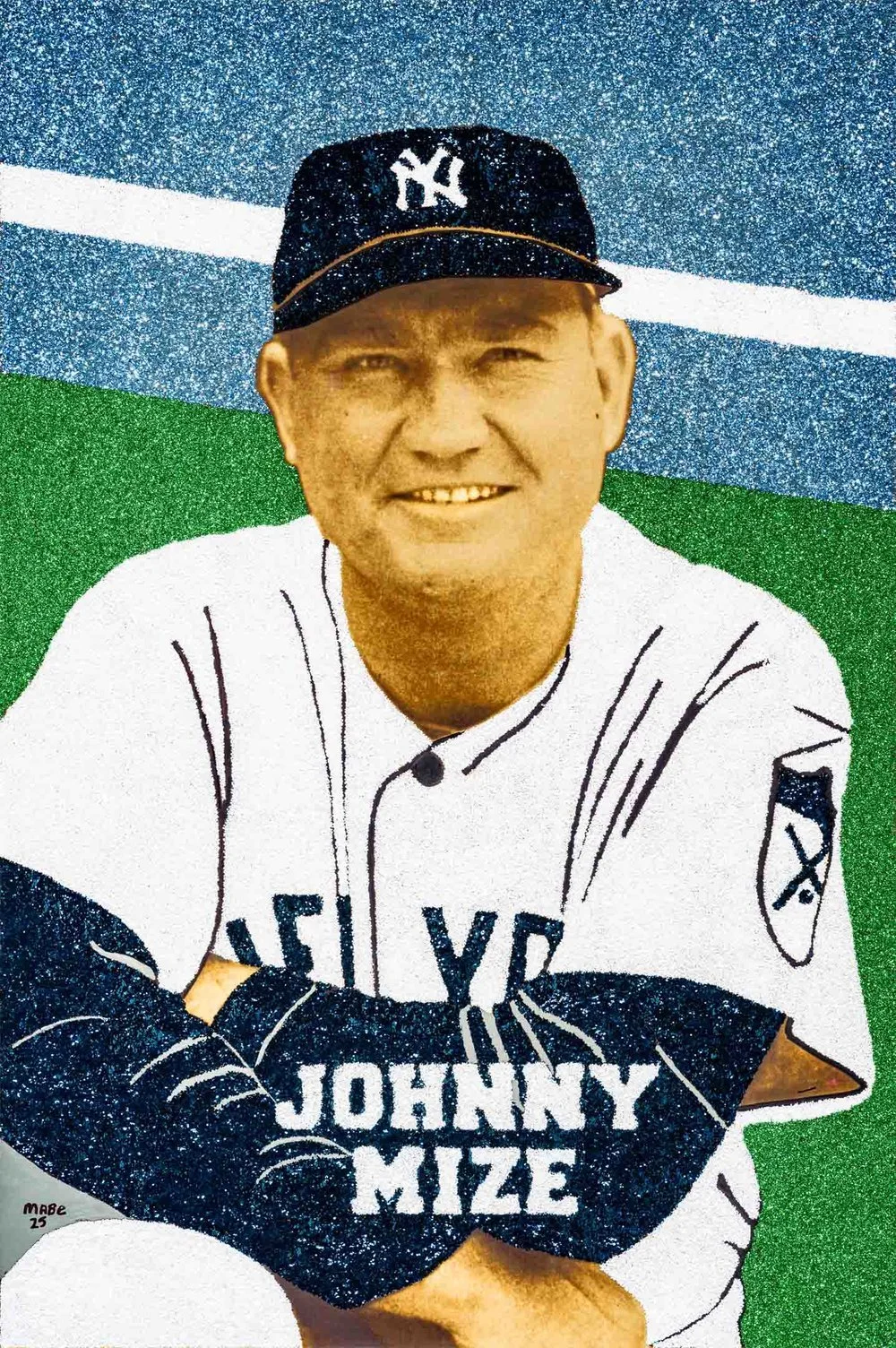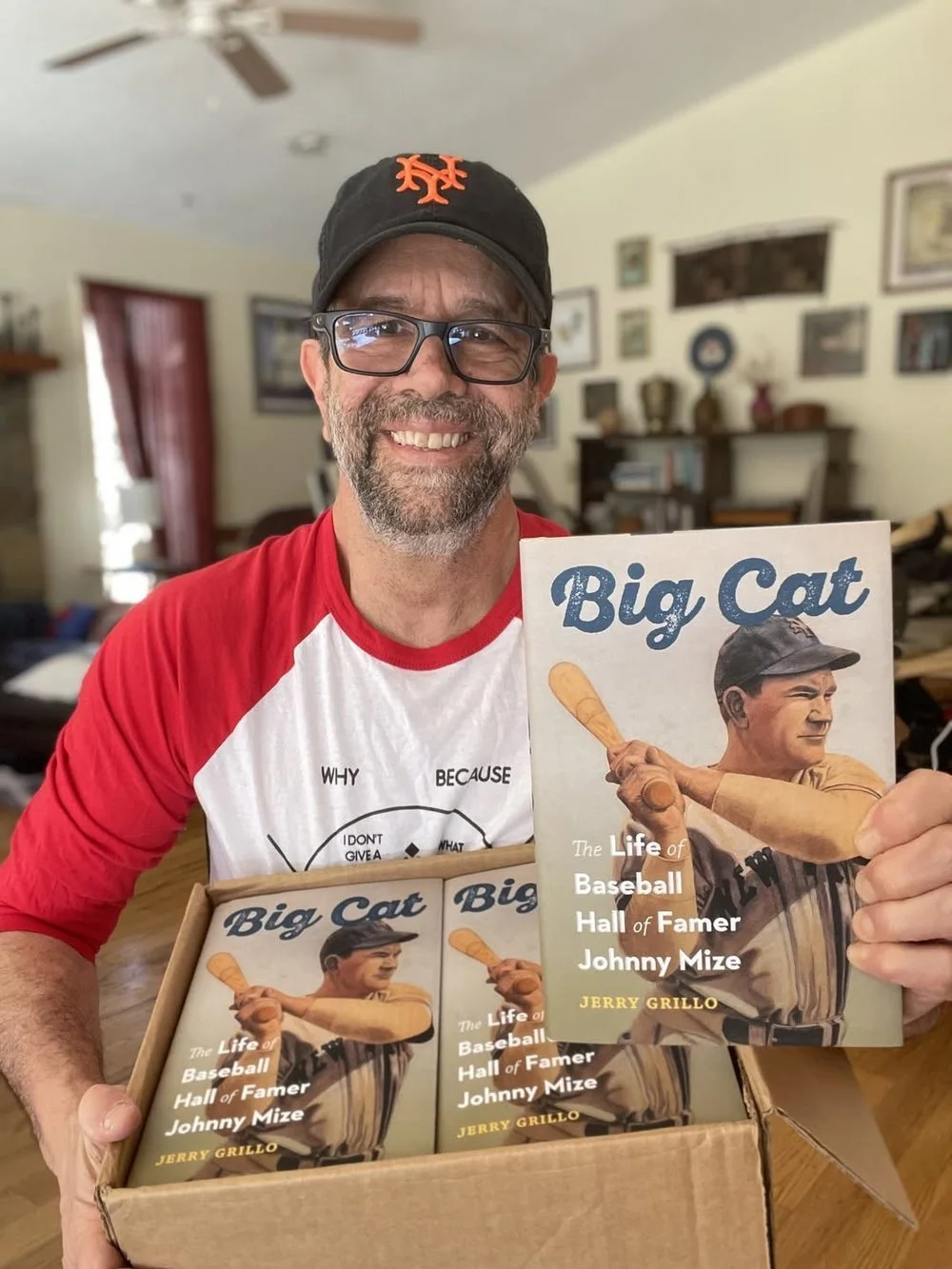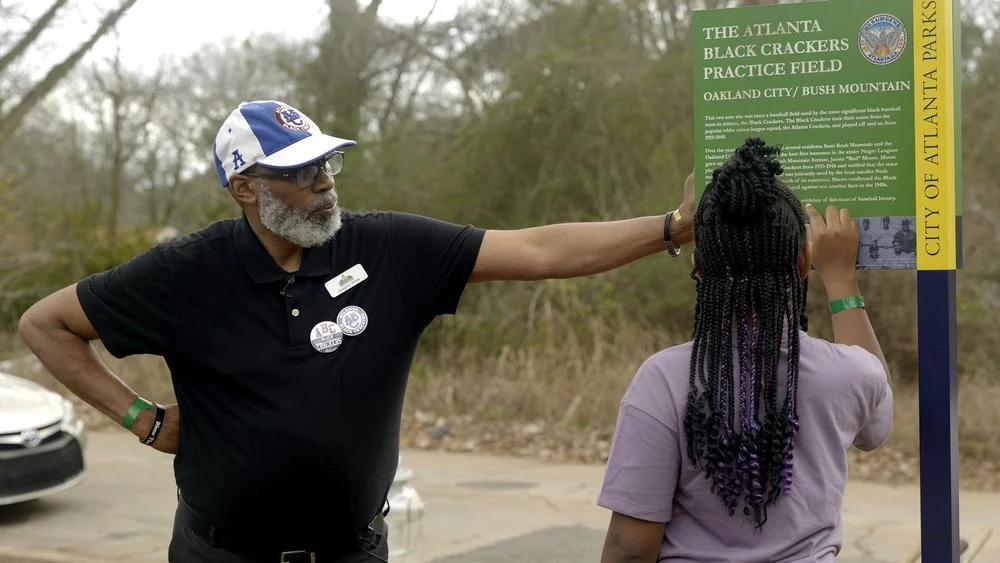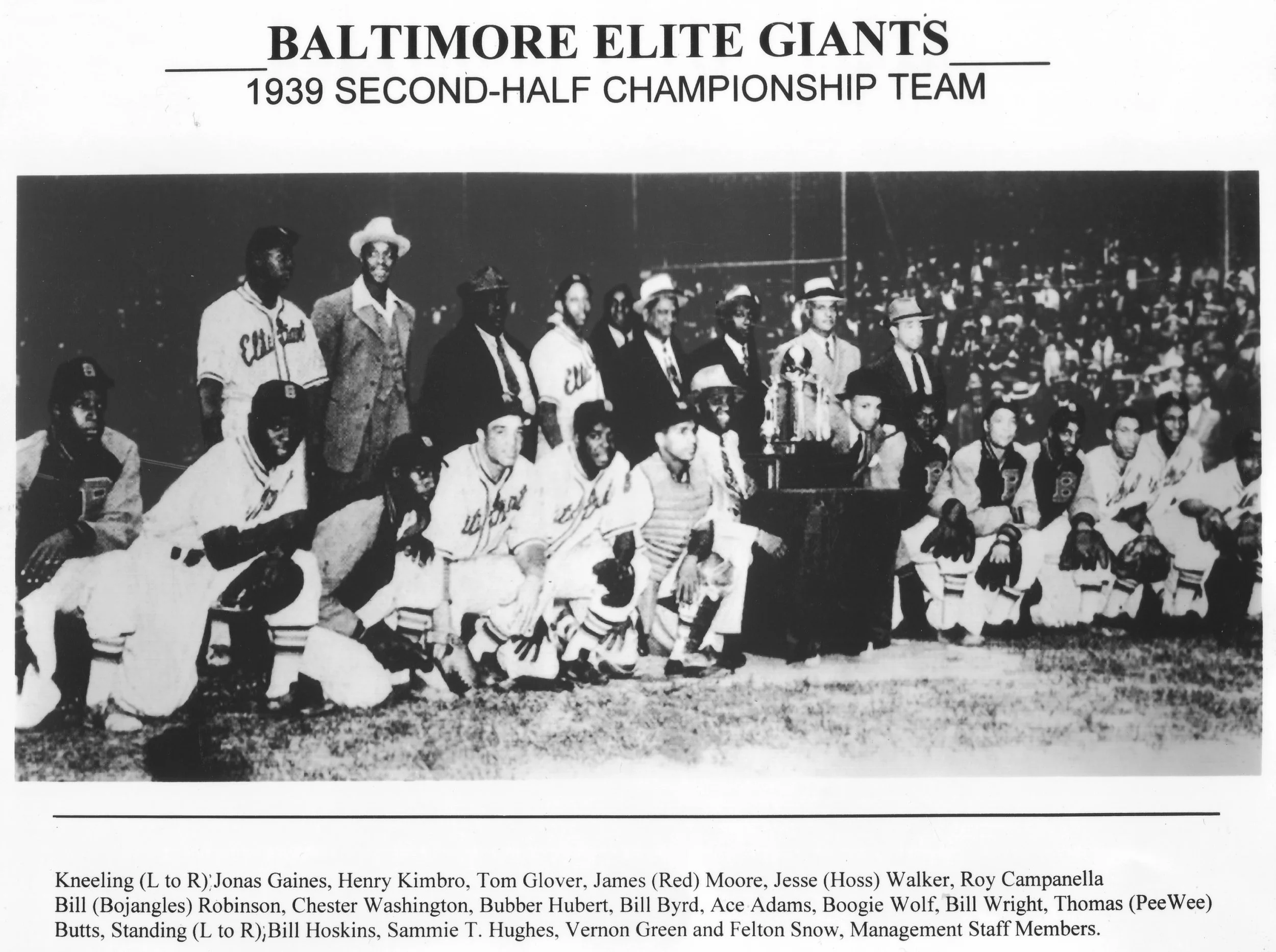Coming to Georgia Public Broadcasting in Spring 2026
In this 2025 documentary, we go behind the scenes to see what North Georgia author Jerry Grillo discovered about Hall of Famer Johnny Mize while writing his 2024 biography (https://www.nebraskapress.unl.edu/nebraska/9781496235442/big-cat/).
One of the celebrated hitters in baseball’s Golden Age (1920s-1950s), Mize was born and raised in tiny Demorest, Georgia, in the northeast Georgia mountains, where he returned to live out his later years.
Mize spent 15 seasons slugging for the Cardinals, New York Giants, and finally with the New York Yankees, who won a record five straight World Series (1949-1953) with Mize as their ace in the hole—the best pinch hitter in the American League.
After retiring from baseball, Mize then spent 28 years waiting for an invite from baseball’s Hall of Fame before he was finally inducted in 1981.
Grillo's 20-year writing journey is a story in itself. He raised a family within 20 miles of Mize’s home and took a 20-year break from writing the book to help care for his son. During that time, more resources became available online and Grillo learned something about Mize that few people knew.
Mize grew up in the racist Jim Crow South. But in the off-season he played with and against some of the greatest Black athletes and Negro Leaguers of the day—this during an era when it was illegal in the Deep South for Blacks and Whites to play on the same field together. He played alongside Ted Williams, Joe DiMaggio and a young Mickey Mantle, but when asked to name the greatest player he ever saw, Mize named the Cuban-born Martín Dihigo who he played with in the early 1930s.
During this same era, the Negro Leagues were enjoying its own Golden Age with the likes of Josh Gibson, Satchel Paige, Buck Leonard and many more. Atlantans celebrated their own all star first baseman who dazzled fans at Ponce de Leon ballpark: James “Red” Moore of the Atlanta Black Crackers. Moore lived in Bush Mountain, an all-Black community in southwest Atlanta.
In 1992, Greg White, a former recreation center director in Decatur, Ga., began volunteering to help Moore achieve his dream of being an ambassador for Negro League baseball before he died in 2016 at the age of 99.
We think there might be lessons to be learned from Mize and Moore, Grillo and White.
Of course our main goal is to just tell a good story.
What People Are Saying
“You led me through Mize's story as if he were sitting right there telling it to me himself. Somehow, with this, you found the true shape of Mize's life and the exact place he held in the larger world he inhabited and took us with you. You found him in the process. Well, that's what makes it art.”
“Big Cat succeeds brilliantly in creating deep human meaning, with its greatest strength lying in the narrative braiding that weaves together Jerry's personal journey of discovery with Johnny Mize's own delayed recognition and James Red Moore’s exclusion. The inclusion of Jerry's family story adds personal stakes and emotional depth, making this as much about the biographer's journey as the subject's life.”
“I enjoyed the archetype of the unappreciated hero who finally gets his due juxtaposed with one who didn't get his due. That left a call to justice for the Black player. I also liked how the variations on “Take Me Out to the Ballgame” foreshadowed the next chapter of the story.”
“Well done! It was fun 'meeting' all these folks onscreen! Welcome to Georgia!”
“Thanks for another great work of art and educational piece. It was beautifully done. Your work is truly motivating.”
Media
Sporttalk with Dan Reinhard, Baseball Author Jerry Grillo & Filmmaker Hal Jacobs on Johnny Mize, Dec. 1, 2025
Habersham’s Own “Big Cat” Gets Big Screen Debut, Jerry Grillo, Habersham News, Nov. 25, 2025
Note to Sports Collectors
Posters of Mize and Moore on this page (24”x36” limited edition and 12”x18”) and the film poster (12”x18”) are available for sale. Contact haljacobs@gmail.com for more details.
